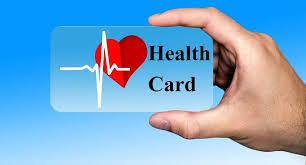Assessing your full body health is crucial for identifying potential issues early and maintaining overall well-being. Regular tests and screenings can help detect problems before they become serious, guide lifestyle adjustments, and ensure you’re on the right track with your health. This article outlines essential tests and screenings for a comprehensive evaluation of your body health, from routine check-ups to more specialized assessments.
The Importance of Regular Health Assessments
Regular health assessments are vital for several reasons:
Early Detection:
Identifying health issues early can prevent more severe conditions and improve treatment outcomes.
Prevention:
Regular screenings help identify risk factors and allow for preventive measures to be implemented.
Monitoring Progress:
For individuals with existing check full body health conditions, regular assessments help monitor progress and adjust treatments as needed.
Guiding Lifestyle Choices:
Health assessments provide valuable information to make informed decisions about diet, exercise, and other lifestyle choices.
Essential Tests and Screenings for Comprehensive Health Evaluation
Blood Pressure Check
What It Measures:
Blood pressure checks measure the force of blood against the walls of your arteries. High blood pressure (hypertension) is a significant risk factor for heart disease, stroke, and kidney problems.
Frequency:
Adults should have their blood pressure checked at least once every 2 years. Those with high blood pressure or risk factors should have it monitored more frequently.
How It’s Done:
Blood pressure is measured using a sphygmomanometer, either manually or electronically. Measurements are taken in millimeters of mercury (mmHg), with two numbers recorded: systolic (when the heart beats) and diastolic (when the heart rests).
Cholesterol Screening
What It Measures:
Cholesterol screening assesses levels of total cholesterol, low-density lipoprotein (LDL), high-density lipoprotein (HDL), and triglycerides. High levels of LDL or triglycerides and low levels of HDL can increase the risk of heart disease.
Frequency:
Adults should have their cholesterol levels checked every 4-6 years, starting at age 20. Those with risk factors or existing heart conditions may need more frequent testing.
How It’s Done:
A blood sample is taken after fasting for 9-12 hours to measure cholesterol levels.
Blood Glucose Test
What It Measures:
Blood glucose tests measure the amount of sugar (glucose) in the blood. Elevated blood glucose levels can indicate diabetes or prediabetes.
Frequency:
Adults should have their blood glucose levels checked every 3 years starting at age 45. Those with risk factors or symptoms of diabetes should be tested more frequently.
How It’s Done:
Blood glucose levels can be measured through fasting blood glucose tests or the A1C test, which provides an average of blood glucose levels over the past 2-3 months.
Body Mass Index (BMI) and Waist Circumference
What It Measures:
BMI assesses body fat based on height and weight. Waist circumference measures abdominal fat, which can indicate a higher risk for cardiovascular disease and metabolic conditions.
Frequency:
BMI and waist circumference should be assessed regularly, especially if there are concerns about weight or metabolic health.
How It’s Done:
BMI is calculated using the formula weight (kg) / height^2 (m^2). Waist circumference is measured around the natural waistline, typically above the belly button.
Cancer Screenings
a. Mammogram (Breast Cancer)
What It Measures:
Mammograms are X-ray images of the breast tissue used to detect abnormalities or early signs of breast cancer.
Frequency:
Women should start getting mammograms at age 40 and continue every 1-2 years, depending on risk factors and recommendations from healthcare providers.
How It’s Done:
The breast is compressed between two plates while X-ray images are taken.
b. Pap Smear (Cervical Cancer)
What It Measures:
Pap smears detect abnormal cells in the cervix that may indicate cervical cancer or pre-cancerous conditions.
Frequency:
Women should begin Pap smears at age 21 and continue every 3 years until age 29. From ages 30-65, they can switch to Pap testing every 5 years combined with HPV testing.
How It’s Done:
A sample of cells is collected from the cervix during a pelvic exam and examined under a microscope.
c. Colonoscopy (Colorectal Cancer)
What It Measures:
Colonoscopies screen for abnormalities or cancer in the colon and rectum.
Frequency:
Screening should begin at age 45 or earlier if there are risk factors. It is typically done every 10 years if results are normal.
How It’s Done:
A flexible tube with a camera is inserted through the rectum to examine the colon.
Bone Density Test
What It Measures:
Bone density tests assess bone strength and risk of osteoporosis by measuring bone mineral density.
Frequency:
Recommended for women over age 65 and men over age 70. Those with risk factors for osteoporosis should be tested earlier.
How It’s Done:
The most common method is dual-energy X-ray absorptiometry (DXA), which scans the hip and spine.
Liver Function Tests
What It Measures:
Liver function tests measure enzymes and substances in the blood that indicate liver health and function.
Frequency:
Liver function tests are performed as part of routine check-ups or if there are symptoms of liver disease.
How It’s Done:
A blood sample is taken and analyzed for levels of liver enzymes (such as ALT, AST), bilirubin, and albumin.
Thyroid Function Tests
What It Measures:
Thyroid function tests assess how well the thyroid gland is working by measuring thyroid hormones (T3, T4) and thyroid-stimulating hormone (TSH).
Frequency:
Thyroid function tests are recommended if there are symptoms of thyroid disease or as part of routine health evaluations.
How It’s Done:
A blood sample is analyzed to determine hormone levels.
Taking Action Based on Test Results
Once test results are available, work with your healthcare provider to interpret them and develop an action plan. Follow-up may involve additional tests, lifestyle changes, or treatments based on findings. Regular health assessments should be integrated into a broader health strategy, including maintaining a balanced diet, regular exercise, adequate sleep, and stress management.
Conclusion
Regular tests and screenings are essential for a comprehensive assessment of your full body health. By staying on top of these essential health evaluations, you can catch potential issues early, prevent disease, and make informed decisions about your health and wellness. A proactive approach to health assessments, combined with a healthy lifestyle, contributes to long-term well-being and a higher quality of life.






